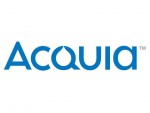This interview is an excerpt from our recent guide, Top Challenges & Solutions From State and Local Governments, which examines 16 case study examples transforming the way government safeguards information and technology.
There are a host of reasons digital technologies like open source and open cloud are being used by progressive state and local agencies to transform their digital experiences. Cost and resource optimization are at the top of the list, but the major driver of digital transformation is providing a better experience for citizens. With 87% of Americans using mobile phones and 64% of Americans saying they would like to conduct more government-related transactions online, agencies must look at their digital platforms and services in new ways.
Many agencies spend money and resources on digital platforms built on closed-source legacy technologies with costly vendor lock-in or build-it-yourself solutions that agency IT teams must manage, troubleshoot, and fix. IT teams are forced to spend time managing help desk calls and monitoring systems, resulting in a lack of agility to meet changing needs of customers.
When it comes to security, state and local agencies should look at federal requirements like FedRAMP and understand facts about cloud security and the data they protect. At a recent Federal Cloud Computing conference, Dan Doney, the Chief Innovation Officer at the Defense Intelligence Agency (DIA) told the audience that that the security of cloud providers is more reliable than government monitoring, and GSA’s Matt Goodrich, who leads the FedRAMP Program, noted that government is good at over-classifying data and only 20-30% is actually data that can’t be stored in the cloud.
In state and local government, the city of Los Angeles and state of Georgia have both successfully transformed their digital presence. They started with understanding the needs of their citizens, what online information and services they wanted, and how they wanted it delivered. Then they evaluated how they could more efficiently meet those needs and maximize the use of internal resources.
Both agencies wanted to transition to modern content management systems based on open industry standards that would provide flexibility and allow for closer citizen engagement. Their requirements included improved reliability, security, and accessibility. Additionally, they wanted support for site monitoring and technology updates so their internal IT teams could focus on mission critical tasks like program and application development.
Both agencies selected a Drupal cloud platform powered by Acquia. Drupal is an open source content management framework that powers over 34% of all .gov sites in the U.S. The Acquia Platform is the leading Drupal-tuned digital cloud PaaS (Platform as a Service) solution that allows agencies the freedom to accelerate site development and deployment. It provides developer tools including version control, build and deploy, and support for multiple environments. It also provides 24 x 7 monitoring and support, all the way up to the application level including custom code.
So what were the results for Georgia and Los Angeles? Nikhil Deshpande, Director of Georgia Technology Authority, estimates $4.7 million in savings since they launched with Drupal on the Acquia Platform in 2011. They have also seen a 43 percent increase in mobile traffic and a consistent increase in page views with 76 million in 2014 and 44 million in just the first five months of 2015. “Georgia is doing its best to make sure constituents have a seamless experience,” Deshpande said. “When mobile reached 20 percent of our traffic, we started a huge project to make the enterprise code base responsive so all of our Web properties adjust to any citizen device.” A great online experience means users are less likely to make a phone call.”
For Los Angeles, Drupal and Acquia have been a game changer. Ross reported LACity.org now has a 99.995 percent uptime versus only about 98 percent in the past, gained 60 percent better performance and 100 percent mobile responsiveness while complying with the Section 508 accessibility requirements.
If your organization is ready to make the move to an open-source digital experience framework and a true digital cloud platform, here are three need-to-know basics to help make it happen.
1: Know your audience. To know your requirements, you need to know your audience. Are they looking for jobs or online forms, or do they need city services or traffic updates? Getting this wrong can result in more strain on internal resources like call center and IT staff and the customer needs not being met.
2: Ask another agency. Talk to other agencies and use their best practices and lessons learned to help you with your roadmap and execution strategy, and to learn about their experiences with vendors and solutions.
3: Plan. Conduct discovery and architecture workshops with vendors at the beginning of any project to ensure that the business requirements that you’re trying to achieve are aligned with your objectives.






Leave a Reply
You must be logged in to post a comment.